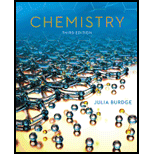
Interpretation:
The reason for the statement that, the long-chain hydrocarbons or
Concept introduction:
Polymers are the molecules with high molecular masses that are made up of repeating monomer units. Polymers are the backbone of four major chemical industries, viz., plastics, elastomers, fibers, and paints and varnishes.
On the basis of mode of
Addition polymers are formed when there is a movement of electrons from multiple bonds into new single bonds between molecules without elimination of small molecule.
Polymers that are formed by elimination of small molecules like
The liquid crystals act like conventional liquids and solid crystals.
The liquid crystals have the ability to flow and take the shape of the container like liquids and have a regular arrangement of particles in the lattice like solids.
The liquid crystals have three types of orders called nematic, smectic, and cholesteric.
Some substances exhibit liquid crystal behavior when they are melted from solids.
As the temperature increases, the solid liquifies but retains some order in one or two dimensions.
Want to see the full answer?
Check out a sample textbook solution
Chapter 12 Solutions
Student Study Guide for Chemistry
 Chemistry: Principles and ReactionsChemistryISBN:9781305079373Author:William L. Masterton, Cecile N. HurleyPublisher:Cengage Learning
Chemistry: Principles and ReactionsChemistryISBN:9781305079373Author:William L. Masterton, Cecile N. HurleyPublisher:Cengage Learning Chemistry for Engineering StudentsChemistryISBN:9781337398909Author:Lawrence S. Brown, Tom HolmePublisher:Cengage Learning
Chemistry for Engineering StudentsChemistryISBN:9781337398909Author:Lawrence S. Brown, Tom HolmePublisher:Cengage Learning World of Chemistry, 3rd editionChemistryISBN:9781133109655Author:Steven S. Zumdahl, Susan L. Zumdahl, Donald J. DeCostePublisher:Brooks / Cole / Cengage Learning
World of Chemistry, 3rd editionChemistryISBN:9781133109655Author:Steven S. Zumdahl, Susan L. Zumdahl, Donald J. DeCostePublisher:Brooks / Cole / Cengage Learning Chemistry & Chemical ReactivityChemistryISBN:9781337399074Author:John C. Kotz, Paul M. Treichel, John Townsend, David TreichelPublisher:Cengage Learning
Chemistry & Chemical ReactivityChemistryISBN:9781337399074Author:John C. Kotz, Paul M. Treichel, John Townsend, David TreichelPublisher:Cengage Learning Chemistry: The Molecular ScienceChemistryISBN:9781285199047Author:John W. Moore, Conrad L. StanitskiPublisher:Cengage Learning
Chemistry: The Molecular ScienceChemistryISBN:9781285199047Author:John W. Moore, Conrad L. StanitskiPublisher:Cengage Learning Introductory Chemistry: An Active Learning Approa...ChemistryISBN:9781305079250Author:Mark S. Cracolice, Ed PetersPublisher:Cengage Learning
Introductory Chemistry: An Active Learning Approa...ChemistryISBN:9781305079250Author:Mark S. Cracolice, Ed PetersPublisher:Cengage Learning





